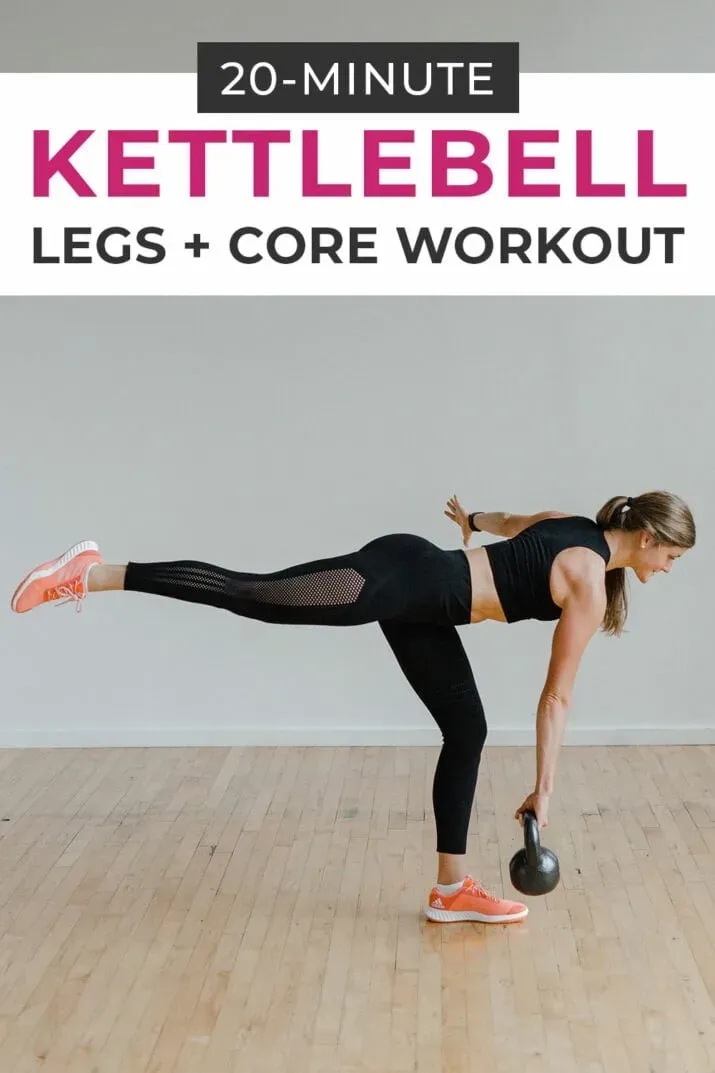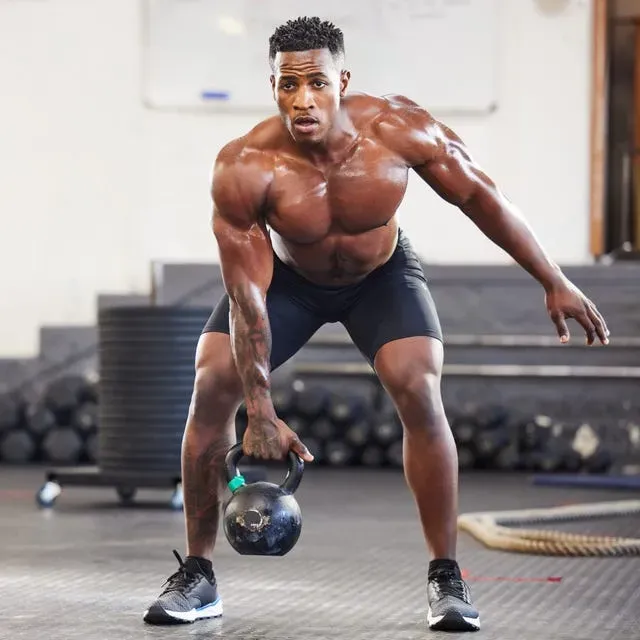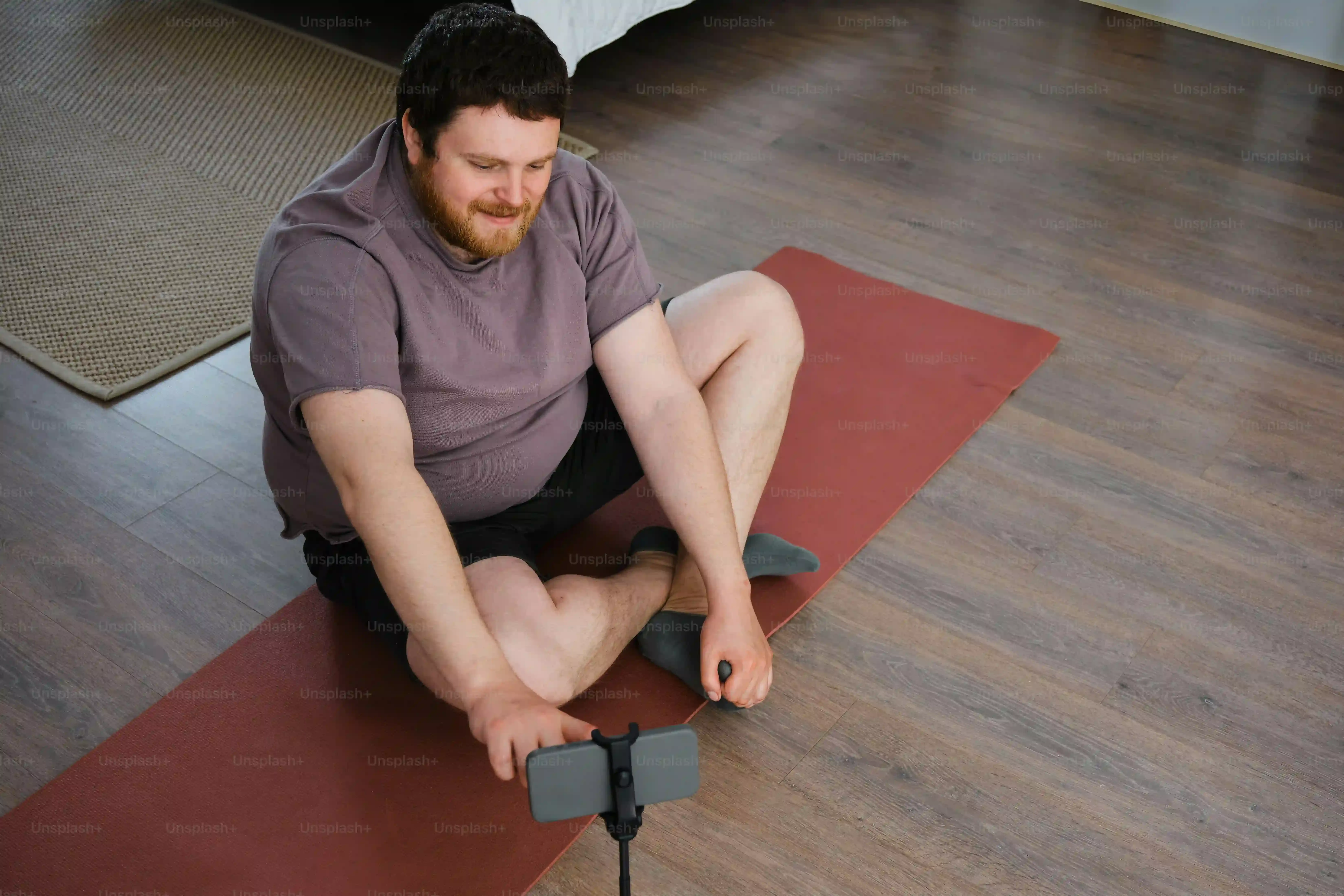Table of Contents
Tired of the same old barbell squats or dumbbell lunges? Ready to challenge your lower body in a way that builds serious strength, power, and stability? You're in the right place. A solid leg kettlebell workout can be a game-changer for building robust, functional legs that don't just look strong, but perform like it too.
The Power of Kettlebells for Lower Body Strength

The Power of Kettlebells for Lower Body Strength
so you're looking at kettlebells for lower body work and thinking, "Are these really that different from dumbbells?" Trust me, they are. The magic lies in their off-center weight distribution. When you swing, clean, or even squat with a kettlebell, that weight isn't neatly balanced like a dumbbell. It pulls and shifts, forcing your stabilizing muscles, especially in your core and hips, to work overtime just to keep you upright and controlled. This isn't just about lifting heavy; it's about managing dynamic load, which builds a kind of resilient, functional strength in your legs and posterior chain that feels incredibly powerful. It’s less like lifting a static object and more like wrestling something alive, and that fight builds serious lower body grit.
Key Benefits of a Leg Kettlebell Workout

Key Benefits of a Leg Kettlebell Workout
Building Strength and Power
Alright, let's talk about the real payoff. A leg kettlebell workout isn't just about moving weight; it's about developing explosive power. Think kettlebell swings – that hip hinge motion, that powerful snap at the top? That builds serious posterior chain power in your glutes and hamstrings, which translates directly into things like jumping higher or sprinting faster. It’s a different kind of strong than just grinding through heavy squats, though those are great too. Kettlebells teach your body to generate force quickly, which is incredibly useful whether you're an athlete or just trying to get off the couch with less effort.
Enhanced Core Stability and Balance
Here’s where the kettlebell really shines compared to dumbbells for your legs. Because the weight hangs below your hand, it constantly challenges your balance and forces your core to engage harder. Every squat, lunge, or single-leg movement with a kettlebell makes your trunk work harder to stabilize the load. This isn't just about having a six-pack; it's about building a rock-solid foundation that protects your spine and improves your overall movement quality during a leg kettlebell workout and in daily life.
- Increased core activation during lower body lifts.
- Improved balance on single-leg exercises.
- Better coordination and body control.
- Reduced risk of lower back strain.
Variety and Injury Prevention
Doing the same leg exercises week after week can get stale, and sometimes, it can lead to overuse injuries. Incorporating a leg kettlebell workout introduces new movement patterns and demands, hitting your muscles from slightly different angles. Swings are a prime example – they work the hips in a way that barbell or dumbbell deadlifts don't quite replicate. Adding variety keeps things interesting and helps shore up muscular imbalances you might not even know you have, making your legs and hips more robust and less prone to breaking down.
Your 12Move Ultimate Leg Kettlebell Workout

Your 12Move Ultimate Leg Kettlebell Workout
Alright, so you're sold on the idea of using kettlebells for those wheels. Now, let's get to the actual work. Putting together a comprehensive leg kettlebell workout means hitting your lower body from all angles – pushing, pulling, hinging, and stabilizing. We've curated a list of 12 killer moves that, when combined thoughtfully, create what we're calling Your 12-Move Ultimate Leg Kettlebell Workout. This isn't just a random assortment; these exercises build on each other, challenging your strength, power, balance, and endurance, ensuring you leave the gym (or your living room) knowing you've seriously worked your legs.
- Kettlebell Swings
- Goblet Squats
- Bulgarian Split Squats (per leg)
- Single-Leg Deadlifts (per leg)
- Racked Squats
- Kettlebell Back Squats
- Sumo Squats
- Sumo Deadlifts
- Kettlebell Walking Lunges (per leg)
- Kettlebell Wall Sits
- Kettlebell Step-Ups (per leg)
- Turkish Get-Ups (per side)
Mastering Technique in Your Leg Kettlebell Workout

Mastering Technique in Your Leg Kettlebell Workout
Start Light, Move Right
Look, kettlebells are awesome, but they aren't barbells. You can't just load them up the same way, especially when you're starting your leg kettlebell workout journey. The technique is king. Seriously. Trying to swing a bell that's too heavy before you own the hip hinge is a recipe for a sore back, not strong legs. Start with a weight that feels almost too light. I remember the first time I picked up a 16kg bell for swings; I felt like I was just waving it around. But that's where you learn the movement pattern, the snap of the hips, the coordination. You build the neurological connection before you add significant load. Master the movement, feel it in the right muscles – your glutes and hamstrings for hinges, your whole leg for squats – before you even think about going heavier. It’s about quality reps, not just moving weight.
Common Pitfalls and How to Fix Them
Even with light weight, it's easy to fall into bad habits during a leg kettlebell workout. One of the most common? Turning a swing into a squat. The swing is a hinge, mostly from the hips, not a dip down with your knees. Your chest stays relatively tall, and the power comes from driving your hips forward, like you're trying to punch through a wall behind you. Another one is letting your knees cave in during squats or lunges. Keep those knees tracking over your toes. For single-leg work, like split squats or single-leg deadlifts, rushing is a killer. Slow down, focus on stability, and make sure you feel the work in the standing leg's glute and hamstring. It takes concentration, but cleaning up your form prevents injuries and makes the exercises way more effective.
Exercise | Common Mistake | How to Fix |
|---|---|---|
Kettlebell Swing | Squatting instead of Hinging | Focus on pushing hips back, slight knee bend, chest stays relatively upright. |
Goblet Squat | Knees Caving In | Actively push knees out, keep chest up, maintain tension. |
Single-Leg Deadlift | Rounding the Back | Keep back straight, hinge from the hip, maintain core tension. |
Walking Lunges | Losing Balance/Control | Slow down, focus on controlled descent and powerful push off the back leg. |
Listen to Your Body, Progress Smartly
Once you feel solid with the basic technique and a lighter weight, you can start increasing the load or the volume. But don't rush it. Kettlebells, especially in a dynamic leg kettlebell workout, can be deceptively challenging. Your grip might fail before your legs, or your core might fatigue first. That's normal. Pay attention to what your body is telling you. If your form breaks down after a certain number of reps, stop there for the set. It's better to do fewer perfect reps than a bunch of sloppy ones. Gradually increase the weight when the current weight feels easy and you can maintain perfect form for your target reps. Consistency and smart progression beat trying to jump ahead too fast any day.
Taking Your Leg Kettlebell Workout to the Next Level

Taking Your Leg Kettlebell Workout to the Next Level
Adding Complexity and Load to Your Leg Kettlebell Workout
so you've nailed the basics of your leg kettlebell workout. Swings feel powerful, goblet squats are solid, and those single-leg deadlifts aren't making you look like a newborn giraffe anymore. What's next? Simply adding more weight is the obvious answer, but kettlebells offer more than just heavier iron. You can increase complexity. Think about complexes, where you move from one exercise directly into another without putting the bell down. A squat clean into a racked squat, for instance. Or maybe adding pauses at the bottom of your squats, forcing your muscles to work harder against gravity. You could also try adding accommodating resistance with bands looped around the kettlebell and your feet, making the top portion of the lift harder. This isn't about ego lifting; it's about finding new ways to challenge the muscles and coordination you've built.
Consider mixing stances or tempos. Try a Cossack squat with a kettlebell held goblet style – that's a brutal test of hip mobility and single-leg strength. Or slow down the eccentric (lowering) phase of your squats or lunges to four or five seconds. That added time under tension builds serious muscle endurance and control. Don't just chase bigger numbers on the bell; chase mastery of movement under increasing difficulty. That's how you really build legs that are not just strong, but resilient and athletic. It's about making your leg kettlebell workout smarter, not just harder.
Integrating Advanced Techniques and Programming
Beyond just individual exercise variations, you can level up your leg kettlebell workout through smart programming. Consider density training: pick a few exercises, set a timer (say, 10-15 minutes), and see how many quality sets you can complete. This pushes your conditioning alongside your strength. Or try ladders, where you increase reps each set (e.g., 1 swing, 1 goblet squat, then 2 swings, 2 goblet squats, up to a certain number). This builds volume efficiently.
Another path is incorporating kettlebells into hybrid workouts. Pair a heavy kettlebell deadlift with some explosive jump squats (bodyweight or light bell) for a power focus. Or follow up a tough set of kettlebell front squats with a grueling kettlebell farmer's walk for grip and core endurance. The kettlebell's versatility means it can anchor a workout or serve as a potent finisher. Don't get stuck just doing sets of 10-12 reps. Explore different rep ranges, set structures, and workout formats. The goal is to keep your legs guessing and adapting. A well-designed leg kettlebell workout program should evolve as you do, constantly presenting new, intelligent challenges.
What's one advanced technique you could try next week?
Finish Strong with Your Kettlebell Legs
So there you have it – a dozen ways to challenge your lower body with nothing but a kettlebell. We've talked about why these cannonballs with handles are more than just a fad, how they force your core to work overtime, and the sheer versatility they bring to leg day. Swings for power, squats for strength, lunges for stability – this leg kettlebell workout hits it all. Don't expect it to be easy; good training rarely is. But stick with it, focus on form, and watch your legs transform from pillars into pistons. Grab a bell and get to work.